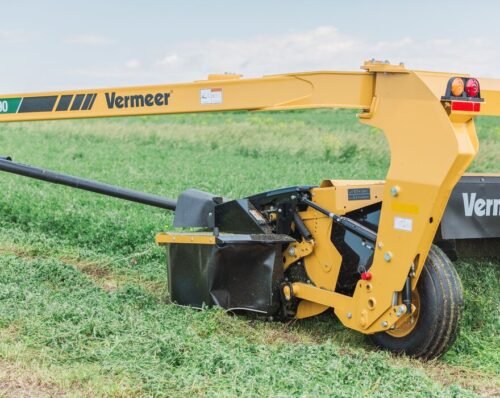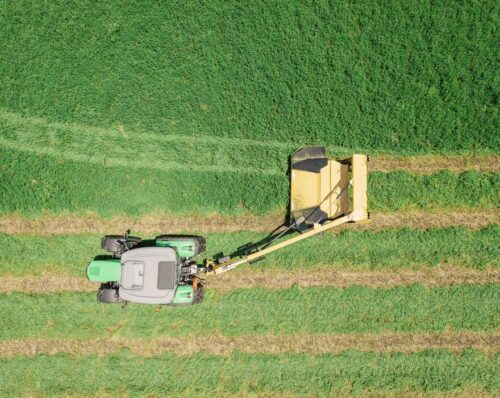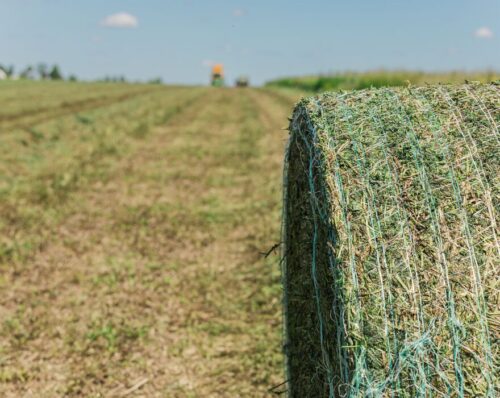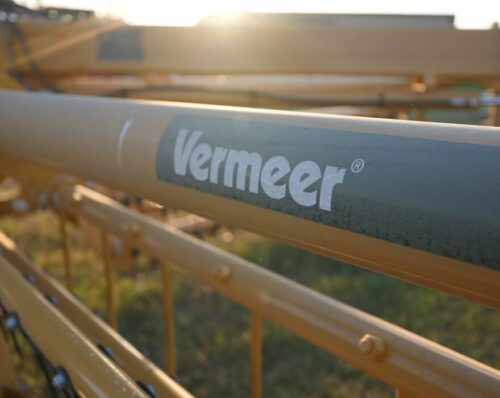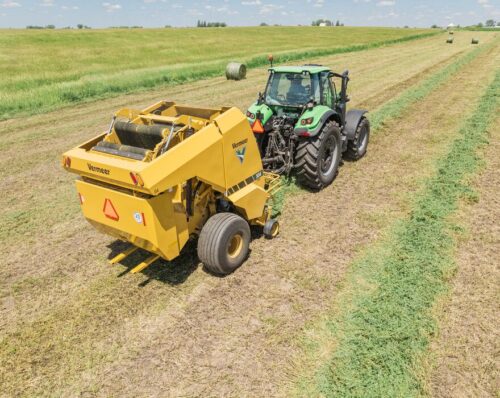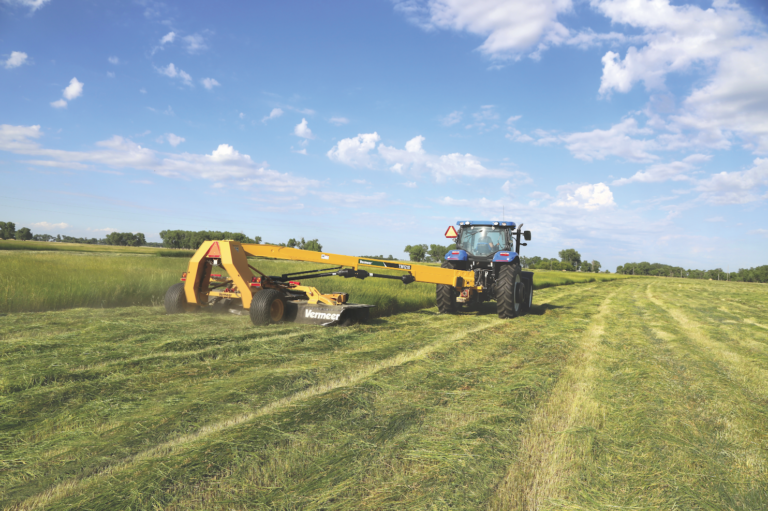
Mow it, Rake it, Bale it in One Day
November 2017
Today, more and more producers throughout the United States are adopting what is fast becoming a popular “hay in a day” practice for their forage harvesting operations. The concept and process is really pretty simple – widening cutting swaths at the cutting stage.
The benefits:
- Faster, more even dry down
- The ability to produce higher quality forage
- Reducing the risk of rain damage
- Better feed value
- For dairy cows, it also means the potential to increase milk production
“Forming a wide swath immediately after cutting is the single most important factor in maximizing initial drying rate and preserving starches and sugars”, said Dan Undersander, University of Wisconsin Extension Specialist. Research studies conducted by the university also indicate haylage from wide swaths produces nearly one percent more TDN (total digestible nutrients) and more lactic and acetic acid. According to Undersander, that means there’s potentially less spoilage in the feed and the improvement in overall forage quality for dairy cows could potentially increase milk production by 300 pounds per acre.
He goes on to recommend growers start looking for machines that make the widest swath relative to the width of the cutting bar on the mower.
“Hay in a day” applies primarily to the harvesting of higher-moisture haylage, which is quickly plastic-wrapped in airtight tubes or individually wrapped packages. However, many of the benefits of wide swath management are also very effective when harvesting dry bales, particularly in terms of faster dry down, reducing the risk of rain damage and maintaining quality feed.
The facts about dry down*:
Plants continue to respire during the wilting and drying process of cut forages. Forage generally contains about 75 percent moisture at the time it is cut. This means a yield of two tons of dry matter per acre must lose:
- 2.3 to 3 tons (550 to 720 gallons) of water per acre to dry to 60 to 65 percent moisture for haylage
- 5.7 tons (1,370 gallons) of water per acre to dry to 13 percent moisture for hay
This respiration process consumes plant sugars (energy) in the plant’s cells and produces oxygen and water. The longer it takes forages to dry to the ideal moisture content, the longer the forage is respiring in the field.
Drying rate of hay crops is influenced mostly by sunlight. It increases the swath temperature and reduces humidity in the forage. Approximately half the water comes from leaves, so they must be exposed to sunlight to keep the stomates (the surfaces of plant leaves that allow gas exchange) open.
A full-width swath increases the drying surface of the swath by 2.8 times. In many Penn State University trials, moisture reductions from 85 to 60 percent were reached in as little as 5-7 hours.
The greater the amount of surface area exposed to sunlight, the greater the impact on the drying rate. Basically, it’s like drying laundry on a clothesline.
The practice of wide swath management is even more effective than conditioning or turning the mowed swath.
Conditioning is important for making dry hay, as the crimping allows additional moisture to leave the stems at moistures below 60 percent. Conditioning crimps plant stems and disrupts the “plumbing” system of the plant. If left intact the plant plumbing system will function until whole plant moistures drop to approximately 60 to 65 percent, the ideal moisture for haylage.

Initially, open stomata, conditioning and drying in a wide swath promotes rapid water loss. Later in the drying period, the rate of water loss is much lower because osmotic forces hold water in the plant cells and weather conditions hinder water vapor movement from the stem.
In a trial at the University of Wisconsin Arlington Research Station (Figure 2) where alfalfa was put into a wide swath it reached 65 percent moisture in about eight hours and could be harvested for haylage the same day as cutting. The same forage from the same fields put into a narrow swath (covering approximately 30 percent of the cut area) was not ready to be harvested until late in the day or the next day.


Best practices to hasten field drying of grasses and alfalfa:
- Cut at the proper height – 2-4 inches for alfalfa; 3-4 inches for grass or legume/grass mixtures.
Grasses (with the exception of ryegrasses and bluegrasses) need a slightly higher cutting height because of the energy that many store in the stem bases for regrowth. Cutting below three inches will shorten the life of the grass in the stand. - If you’re planning to produce dry bales, adjust the conditioner properly. Roller conditioners are best for alfalfa due to reduced leaf loss. If properly adjusted both styles of conditioners – roller or flail/impeller – will cause the forage to dry at a similar rate.
- Lay hay in a wide swath covering 70 percent or more of the cut area to enhance rapid initial drying.
- Rake/merge ahead of chopping or at a moisture content that minimizes leaf loss and soil contamination. For the best timing, rake at 40 to 60 percent moisture rates with alfalfa and 25 percent for grasses. These percentages can be reached in as little as 24 hours. Adjust the rake to minimize the amount of tines touching the ground for additional contamination protection (this is easier when you have a wide swath and hay stays on top of the stubble).
For more information see Best Practices to Hasten Field Drying of Grasses and Alfalfa, UWEX A3927, available from the University of Wisconsin.
To learn about what Vermeer products would be a good fit for your operation, contact your local Vermeer Dealer today!
*Based on research provided by Penn State University Extension Service and Dan Undersander and Craig Saxe, University of Wisconsin forage specialists

